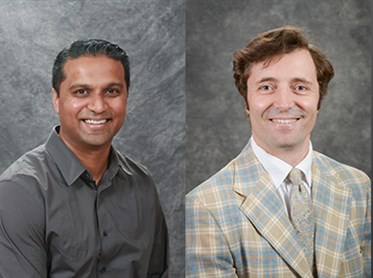 Dr. Suman Chakravorty, associate professor in the Department of Aerospace Engineering and Dr. Dylan Shell, associate professor in the Department of Computer Science and Engineering at Texas A&M University, have received a grant from the National Science Foundation (NSF) to conduct research which will demonstrate how robots can make the greatest use of their personal information by sharing it with those nearby when they are within communication range.
Dr. Suman Chakravorty, associate professor in the Department of Aerospace Engineering and Dr. Dylan Shell, associate professor in the Department of Computer Science and Engineering at Texas A&M University, have received a grant from the National Science Foundation (NSF) to conduct research which will demonstrate how robots can make the greatest use of their personal information by sharing it with those nearby when they are within communication range.
The study centers on the use of robots for information collection of affected spatial fields which, for instance, can be the concentration profile of a pollutant such as a harmful gas or nuclear material over a given geographical area.
The team will be studying the deployed robots as they measure the concentration of these fields and gather information on the area; the idea is to have the networked robots pool their own gathered bits of information together in order to carry out sensing tasks effectively as a cohesive whole so that the global picture becomes clear.
One challenge of this study is if the robots pass out of their range of communication, they run the risk of learning new things about the world and sharing this information with others, thus altering the findings.
Chakravorty stated that the ultimate goal of this research is sharing these pieces of information in a principled manner so that the giant puzzle can be solved with the local pieces of the jigsaw that is available to every robot and without arriving at a completely erroneous answer.
They have been exploring the use of a covariance intersection and other related techniques that provide a way of combining multiple pieces of information to construct a more representative summary of the area. These distributed inference techniques allow one to ensure that sharing information between robots does not lead to misleading results while making sure that the information content regarding the phenomenon being monitored is maximized.
This research has real-world application in the distributed mapping of spatial fields such as the case of a natural gas leak or volcanic eruption.